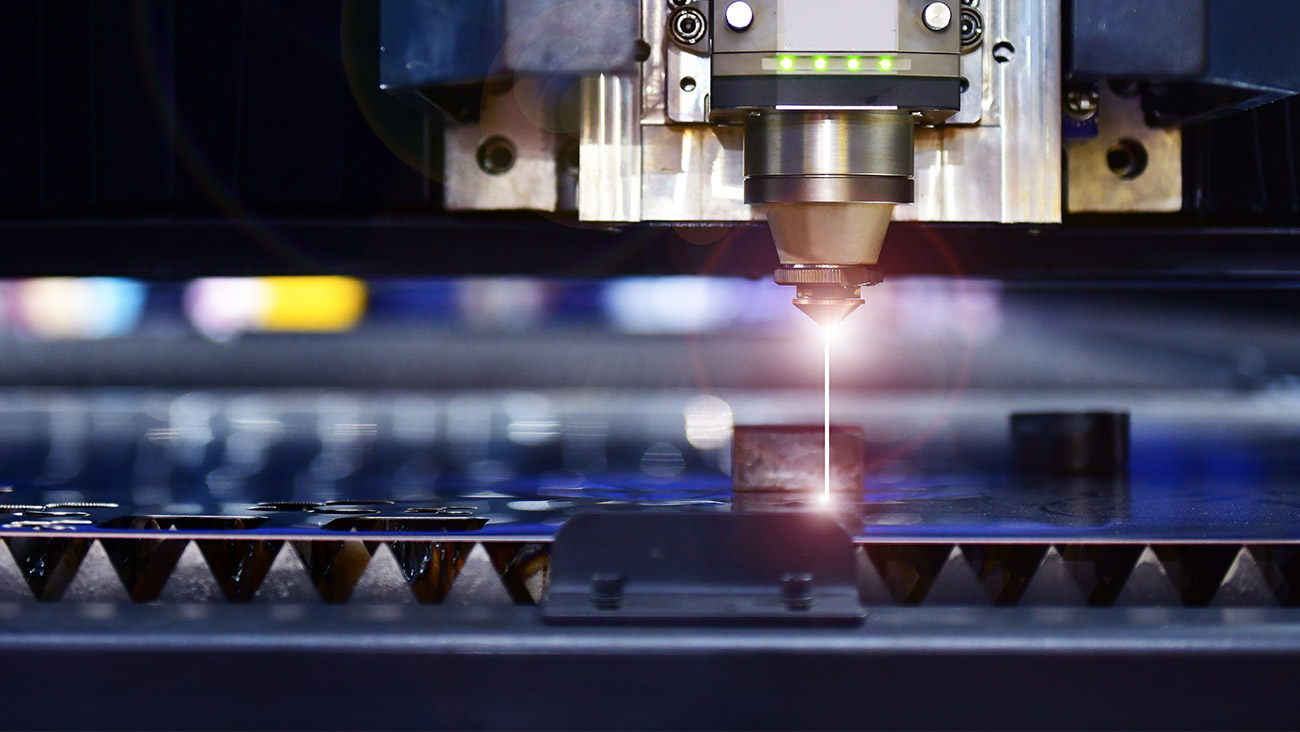The Top Five Benefits of Lasers in Electronics Manufacturing

The ongoing trend of miniaturization in electronics is being further fueled by consumer electronics and the automotive industry which demand greater speed, efficiency, power, and decreased weight. Ultimately, the consumer largely benefits from these advances. Higher quality medical imaging equipment, insanely fast devices, increasingly reliable electronic vehicles are just a few examples. These high-performance applications all demand small, high-performing components. Advancements in technology are seemingly happening daily, but what is less evident is the amount of time and considerable effort it takes to make these advancements possible, and more importantly, manufacturable.
Lasers are one of the most widely used tools in manufacturing today, especially as applications are becoming more demanding. Engineers are constantly being asked to push the boundaries of what is possible. Their designs often include complex features and very tight tolerances. Laser machining can turn these designs into reality by producing parts with fine features that are difficult or impossible to make using traditional machining equipment. Laser cuts are typically clean, with no burrs or heat effects to the surrounding material, thereby eliminating the need for secondary finishing processing such as grinding or deburring. Lasers are becoming the primary manufacturing resource for many, including medical device manufacturers, as they design smaller and more advanced products.
Here are 5 benefits of lasers in today’s manufacturing industry:
Cutting Without Introducing Stress for Improved Yield
Traditional metal cutting methods, such as CNC punching, can cause stress on the cut site and surrounding area. This stress creates structural weak points in the finished product. Weak points make it more likely that the product will fail when put under stress further down the line.
Lasers, on the other hand, penetrate metal without applying mechanical force. Also, the heat generated by a laser at the penetration site is very highly focused. Any heat stress to the material surrounding the site of the cut is kept to a bare minimum. The takeaway? Metal cut with a laser retains more tensile strength than metal cut with traditional methods that rely on physical force.
Reduced Need for Secondary Processing for Improved Productivity
The act of cutting or punching metal often leaves sharp edges and burrs. This usually requires an extra deburring process to smooth out edges and remove the burrs so the part can meet tolerances and be handled safely.
In comparison, the intense, focused heat of the laser beam produces cut edges that are generally smooth, free of sharp burrs, and other deformities, thereby eliminating or minimizing the need for secondary processing.
Reduced Material Waste for Improved Profitability
Manufacturers are always looking for ways to increase profitability and reduce material waste. Clearly, a process that produces a lot of scrap material is neither profitable, nor efficient. Lasers offer the reality of dense part nesting on a sheet of material. This means less waste as parts can be placed close together. This is because laser cutting doesn’t put as much mechanical stress on the material being cut and lasers are incredibly precise. The more cutouts or finished pieces per sheet means greater profitability as less material is wasted.
Greater Design Flexibility
Lasers can make incredibly intricate cuts in many materials, including metals. From small holes to tight corners, the contactless laser operation makes it easy to cut shapes that would be difficult or impossible with other cutting methods such as stamping or punching.
Lasers provide design engineers the freedom to create intricate and densely populated parts. Greater design freedom allows design engineers to focus on optimal performance rather than worrying about ease of manufacturability.
Fast and Repeatable Operation for Improved Efficiency
Simply put, lasers make manufacturing faster, more efficient, more reliable, and more flexible. Though the speed of the laser depends on many factors such as the type of material, material thickness, and laser power jobs can be processed at greater speeds with lasers compared to other methods. As stated previously, laser cutting is a contactless process. There are no additional forces placed on the workpiece, therefore the fixturing effort is reduced significantly, and more consistent parts can be produced. The small heat-affected zone (HAZ) caused from the laser is more controlled and produces less heat stress on the part than traditional cutting methods which rely on shearing or grinding friction to cut.
As technological advances continue to push the envelope in terms of performance, the laser experts at Accumet Engineering help design engineers and manufacturers find a solution, while maintaining quality and profitability. Find out how Accumet can help you with your next project. We vow to increase your competitiveness while reducing your operational costs with our proven advanced manufacturing approach that has quality, speed, and reliability at its core. We're located just north of Boston, Massachusetts in Devens, MA, and proudly service the entire US. We offer many value-added services such as laser cutting, laser drilling, laser welding, laser marking, laser etching, precision polishing, and other secondary processing services. Contact Accumet today for a quote or more information.




